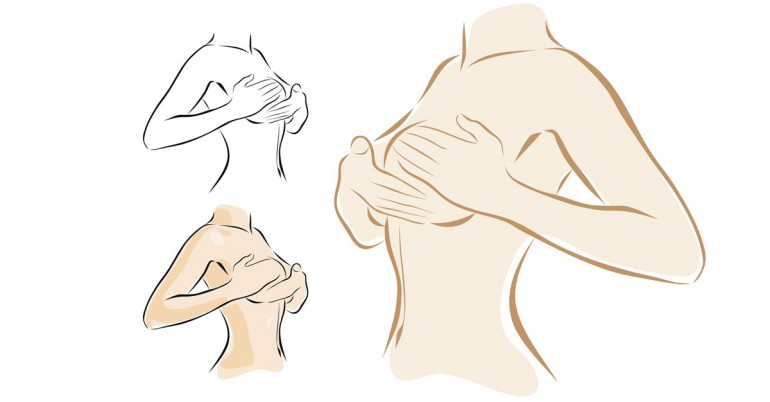Unlike the common myth that a lump is the only indication of breast cancer, there are multiple symptoms that can help in proactively seeking advanced diagnostics and medical help at an early stage. Warning signs of breast cancer vary from woman to woman and there are some cases where symptoms don’t show up at all, even in mammography scans. The most common symptoms are: a change in the look or feel of the breast, a change in the look or feel of the nipple and discharge from the nipple.
Conduct regular self examination of the breasts to look out for:
- Lumps that feels harder or different from the rest of the breast or in the underarms. Not all lumps are cancerous though.
- Sudden discharge (bloody or clear…non milky) from only one nipple (without squeezing). Can be due to an infection as well.
- Change in size/shape, swelling/enlargement, warmth, redness, or darkening of the breast.
- Dimpling or puckering of breast surface with an “orange peel” texture to the skin
- Itchy, scaly sore or rash on the nipple
- Retraction/Inversion of nipple or other parts of the breast.
If you are 40, insist on routine mammograms and regular checkups with your medical practitioner. Listen to warning signs from your body and seek medical guidance.
According to Ayurvedic philosophy, breast cancer is a tridoshic (involving all three body humors) disorder of breast tissue. Basic causes for breast cancer could be both hereditary and acquired. Researchers have identified hormonal, lifestyle and environmental factors that may increase your risk of breast cancer.
Basic Causes of Breast Cancer:
-Age
The risk of breast cancer goes up with age.
-Family History
The risk is higher among women whose close blood relatives have this disease.
-Genetic Risk factors
Inherited changes (mutations) in certain genes like BRCA1 and BRCA2 can increase the risk.
-Personal History Of Breast Cancer
A woman with cancer in one breast has a greater chance of getting another breast cancer (this is different from a return of the first cancer).
Source: curejoy/Gina Hodge



















